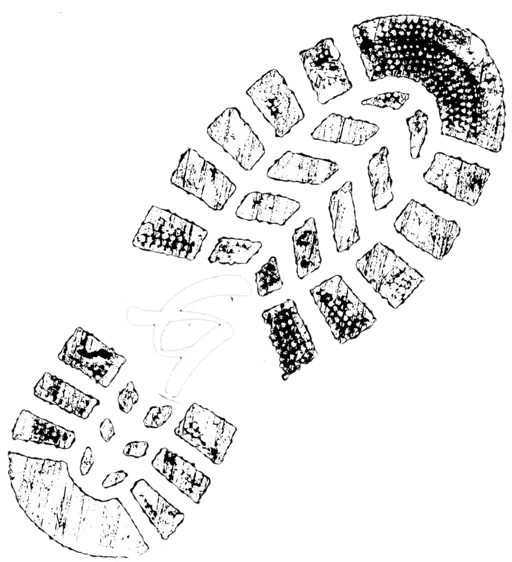Mitchell Loop Hike
I found regular trails, trails that looked like former roads, and trails that were really swamps. I hid a cache relatively “deep” along the route that day and it remained one of my most “out there” cache hides.
I toured the area once since with geocaching buddies after a load of geocaches were hidden in the area. Of course the focus of that kind of outing is on finding geocaches and visiting with friends along the way.
Today was the first day since 2014 that I’ve solo-hiked the entire loop. When you hike solo your senses are not filled with “where do we go next?”, or social interactions with friends. The immediate environment and your impressions of it get your full attention.
Tintern Abbey#
I’ve started with my “hike history” of this particular area because after finishing the hike I was reminded of a poem that made a tremendous impression on me in my 20s: Wordsworth’s “Tintern Abbey”. The actual, full blown title of the poem is “Lines Composed a Few Miles above Tintern Abbey, On Revisiting the Banks of the Wye during a Tour. July 13, 1798”. So you’ll see why I’m going with “Tintern Abbey”: the length of the title is half as long as the Wye River itself!
“Tintern Abbey” situated in Monmouthshire, Wales was in a state of ruin at the time and in the entire first section of the poem, Wordsworth emphasizes repeatedly that he’s returned to experience the “beauteous forms” of nature around the abbey. In fact, the poem doesn’t mention the abbey at all. It’s not about the abbey; rather it is about the natural world surrounding it. The poem focuses on the remembered experience of feeling at one with that natural world:
—that serene and blessed mood,
In which the affections gently lead us on,—
Until, the breath of this corporeal frame
And even the motion of our human blood
Almost suspended, we are laid asleep
In body, and become a living soul:
While with an eye made quiet by the power
Of harmony, and the deep power of joy,
We see into the life of things.
It is this opportunity to “see into the life of things” and to at least sometimes feel first hand that I’m a part of that “life of things” that keeps me returning to hiking trails.
Today, I too was returning to a place that had made a strong impression on me in the past. I’d returned partly with the perennial urge to ease into “non-ego” mindset enough to experience becoming a “living soul"as Wordsworth put it. It’s a chance to experience a glimpse of what Japanese poet Matsuo Basho called the “underglimmer”, to “see into the life of things”, to see things just as they are without any distractions like “Where do we go next”?
Along with that search, there’s the exhilaration of exploration. “What’s around that next bend?” “Oh, my god, this has to have been a road at one time; here in the middle of the bush!”. I remember thinking those things during my first visit and I experienced them again today - this time along with the vague memories of the first outing to compare today’s experiences with.
Mitchell Cabin#
Wordsworth used his return to the locale of Tintern Abbey to express his thoughts about nature; I had the chance to return my version of an “old ruin”: Mitchell Cabin. It’s a small log cabin that has long been in a state of disrepair. I don’t know much about the history of the cabin except that a local trail guide says it was originally built by the Mitchell family.
The structure still standing speaks of a small, rustic hide away in the woods built near what no doubt was once a substantial lake.
Any man-made structure certainly makes an impression in a place where natural cycles are allowed to flow uninterrupted by human intervention. And the lack of that intervention inevitably returns those man-made things to their natural components. The unifying force that the “life of all things” imposes on the elements gradually gives way to the death of all things.That truth is laid bare across the trail from Mitchell Cabin where a second structure, maybe a second cabin, maybe a storehouse, has completely pancaked back to the earth from which it came.
This is a reminder, one we should hardly need; nevertheless, we do need it: when immersing ourselves in nature, hoping to “see into the life of things” we are surrounded by, and equally immersed in the death of things.
The life of things leads inevitably to the death of things, which inevitably supports the life of things.
Gallery#
The Route Today#























